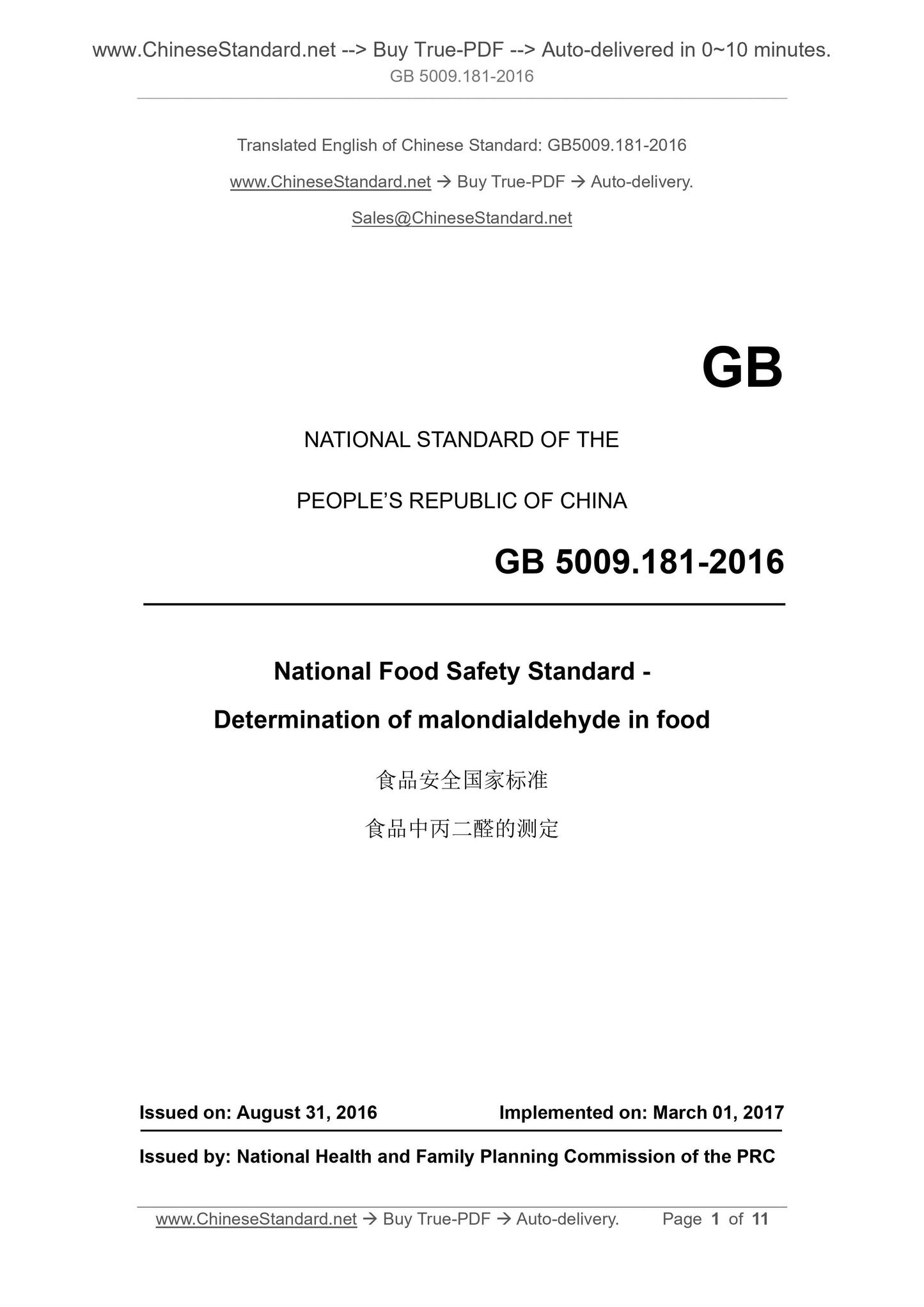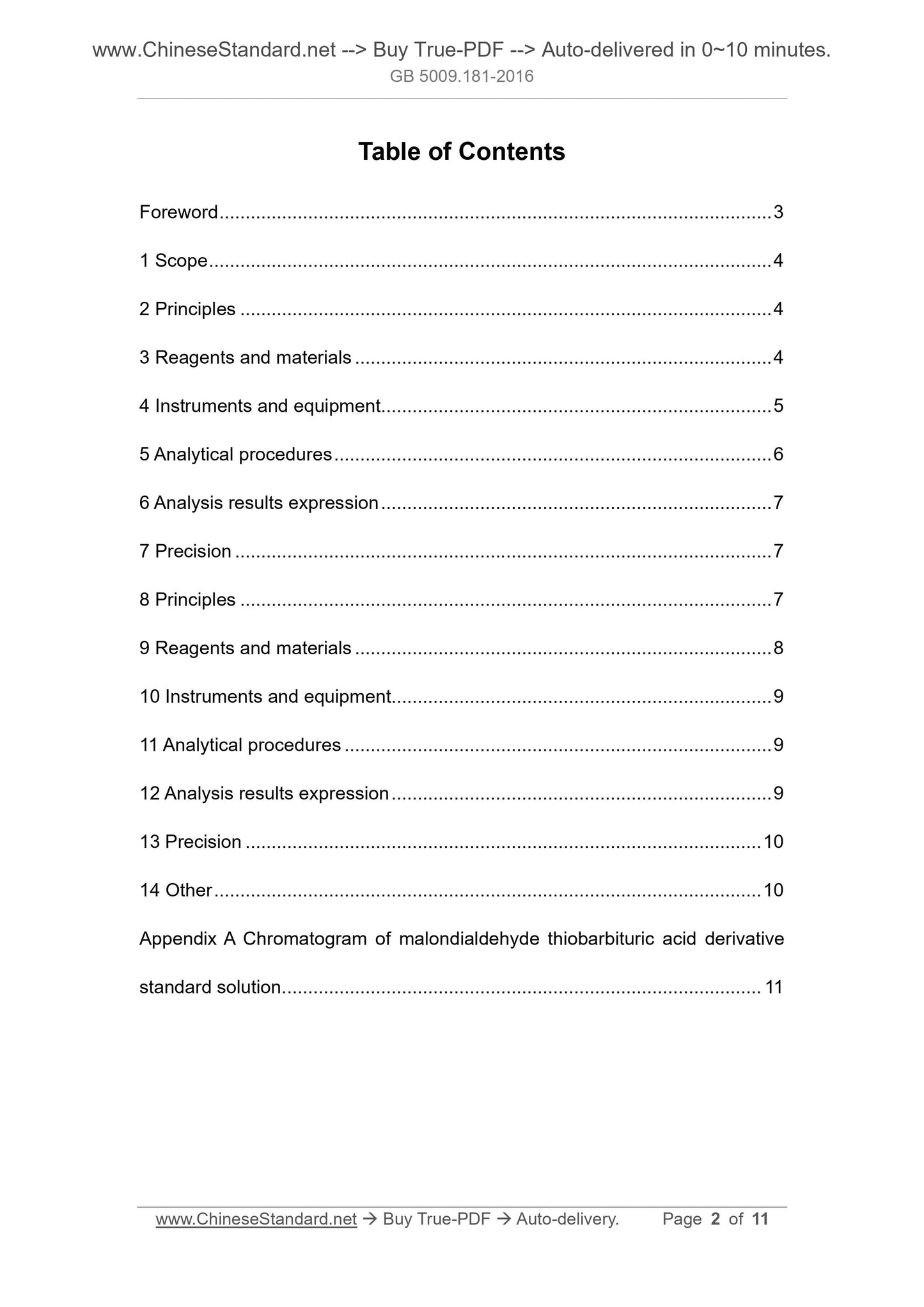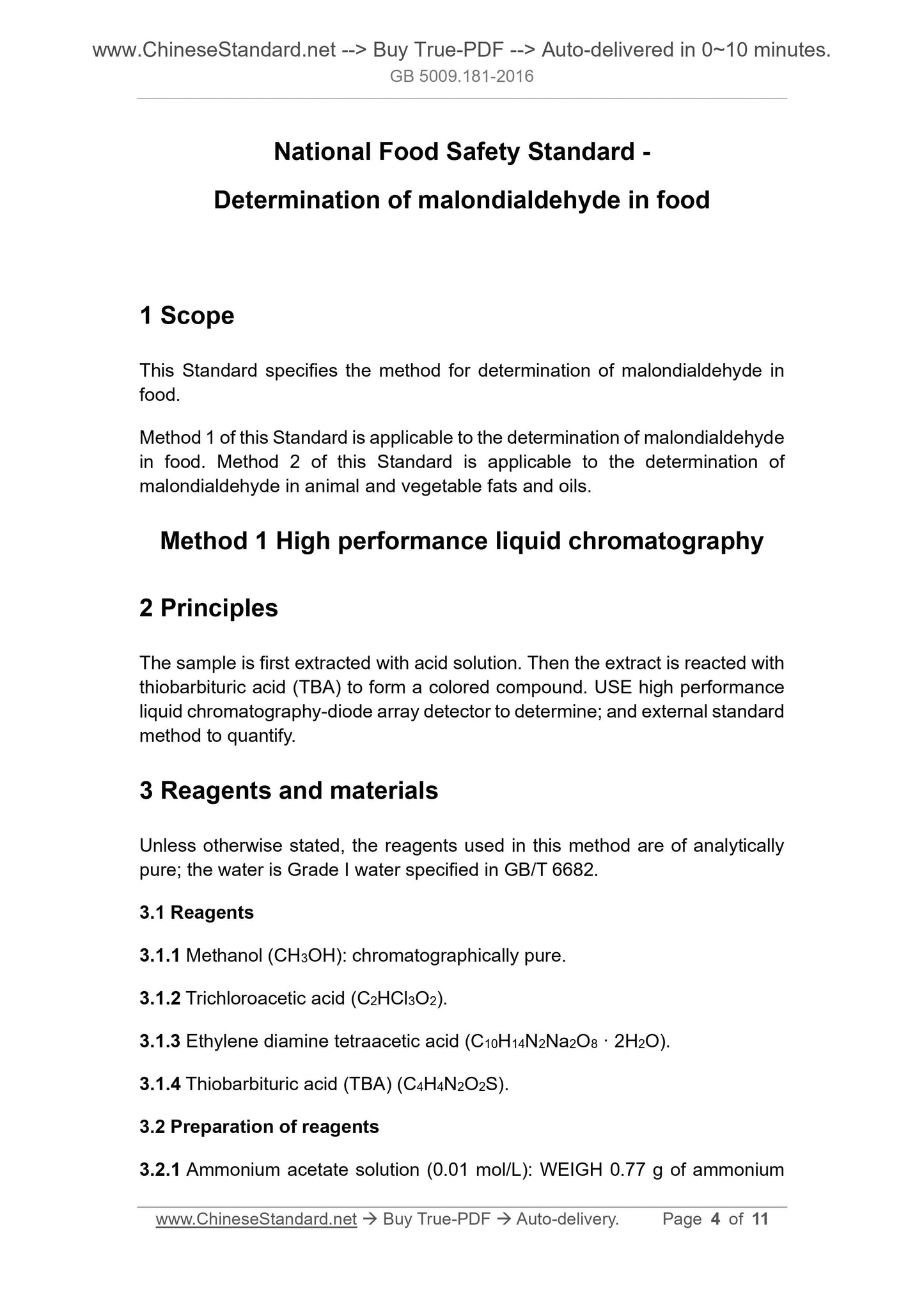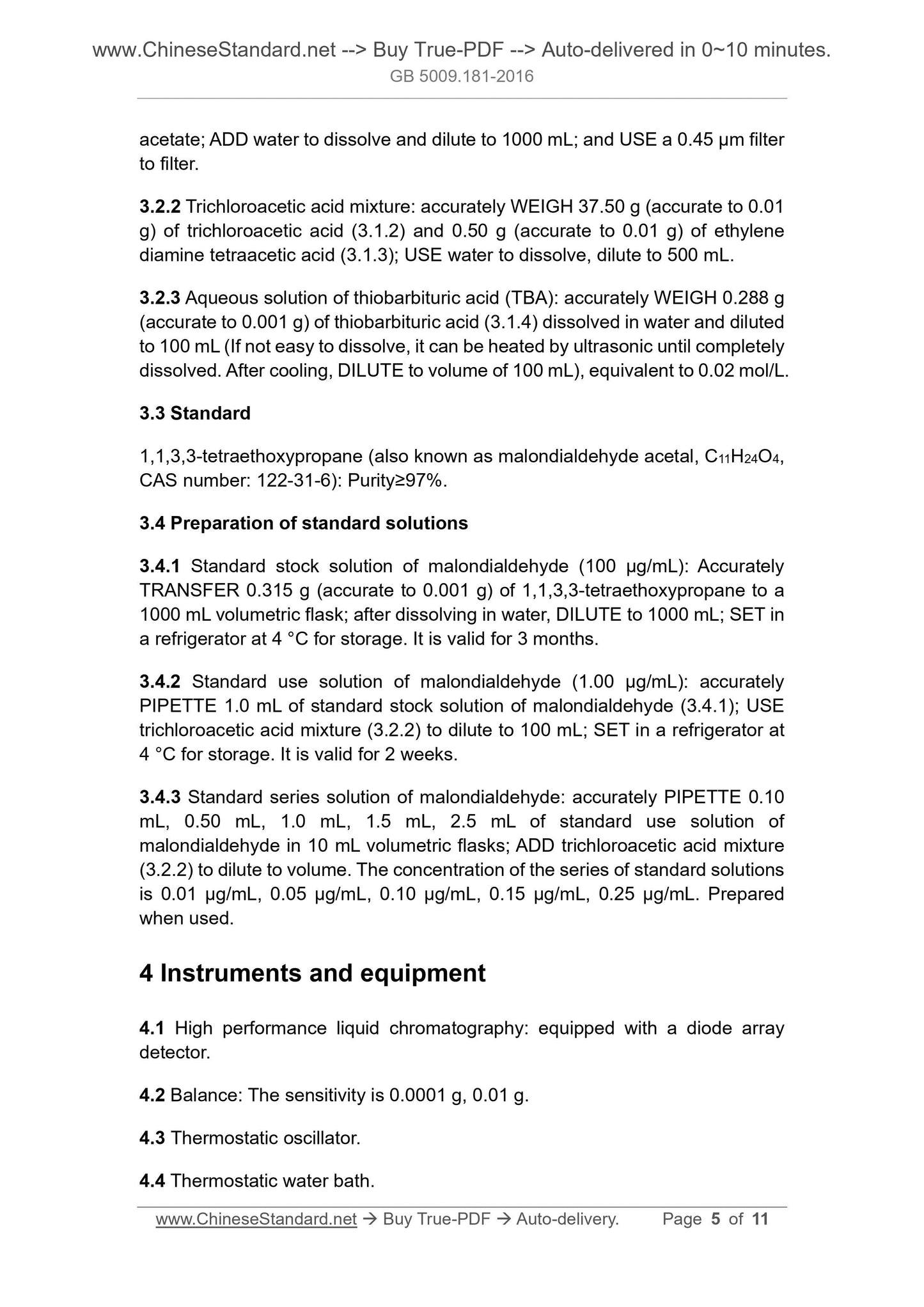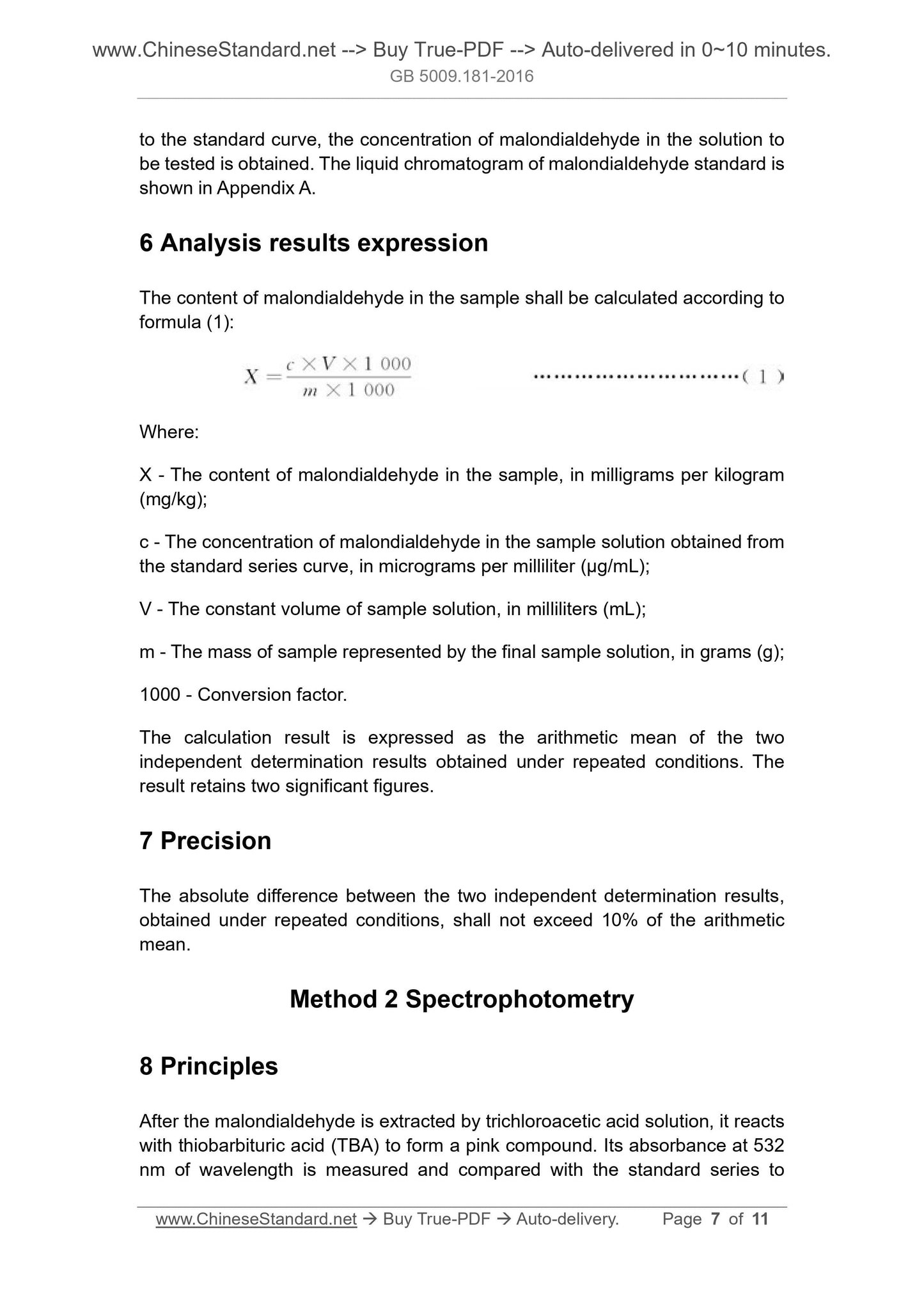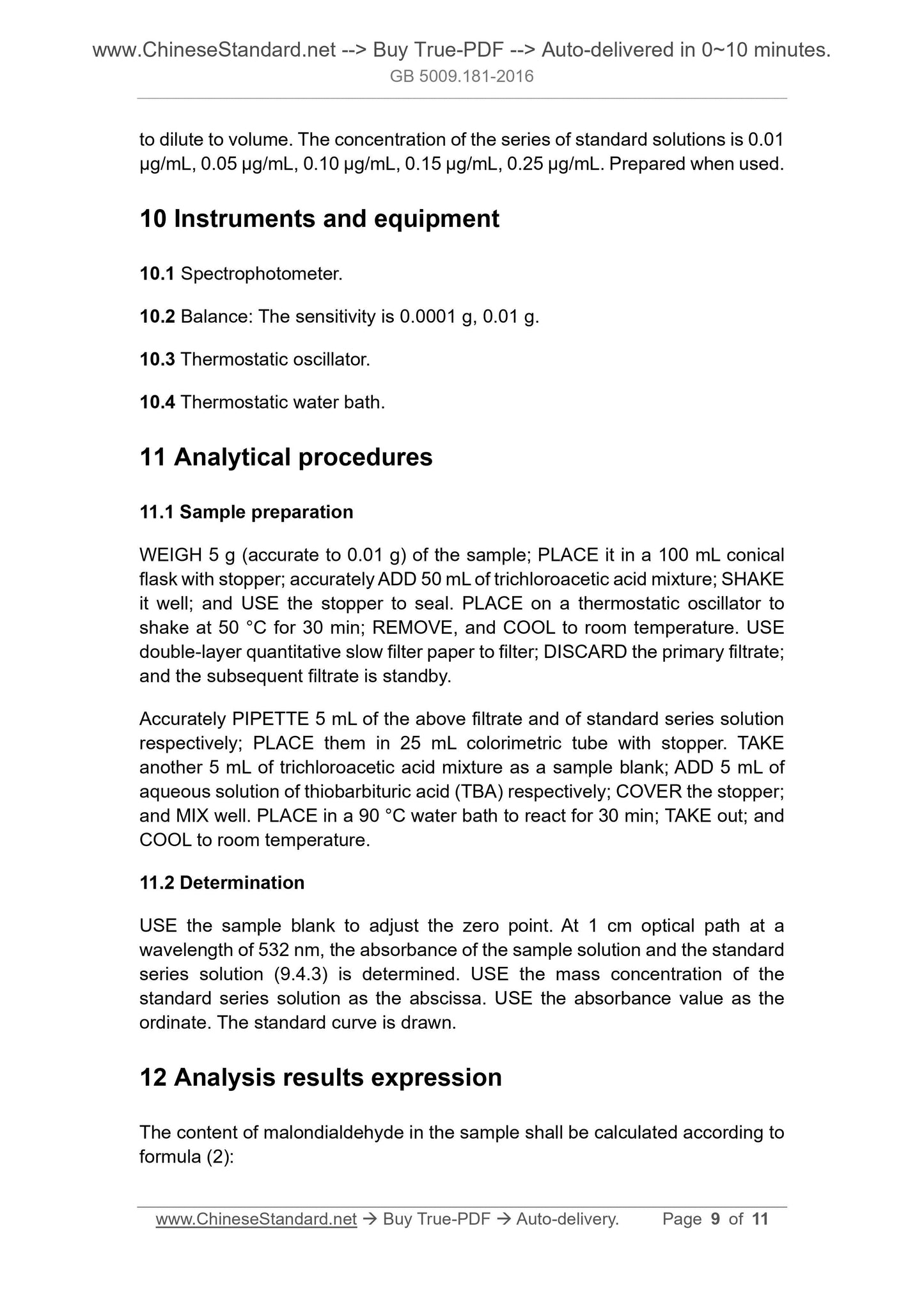1
/
of
6
www.ChineseStandard.us -- Field Test Asia Pte. Ltd.
GB 5009.181-2016 English PDF
GB 5009.181-2016 English PDF
Regular price
$70.00
Regular price
Sale price
$70.00
Unit price
/
per
Shipping calculated at checkout.
Couldn't load pickup availability
GB 5009.181-2016: National food safety standard - Determination of malondialdehyde in food
Delivery: 9 seconds. Download (and Email) true-PDF + Invoice.Get Quotation: Click GB 5009.181-2016 (Self-service in 1-minute)
Newer / historical versions: GB 5009.181-2016
Preview True-PDF
Scope
This Standard specifies the method for determination of malondialdehyde infood.
Method 1 of this Standard is applicable to the determination of malondialdehyde
in food. Method 2 of this Standard is applicable to the determination of
malondialdehyde in animal and vegetable fats and oils.
Method 1 High performance liquid chromatography
Basic Data
| Standard ID | GB 5009.181-2016 (GB5009.181-2016) |
| Description (Translated English) | National food safety standard - Determination of malondialdehyde in food |
| Sector / Industry | National Standard |
| Classification of Chinese Standard | C53 |
| Word Count Estimation | 8,883 |
| Date of Issue | 2016-08-31 |
| Date of Implementation | 2017-03-01 |
| Older Standard (superseded by this standard) | GB/T 5009.181-2003 |
| Regulation (derived from) | State Health and Family Planning Commission Notice No.11 of 2016 |
| Issuing agency(ies) | National Health and Family Planning Commission of the People's Republic of China, State Food and Drug Administration |
Share
